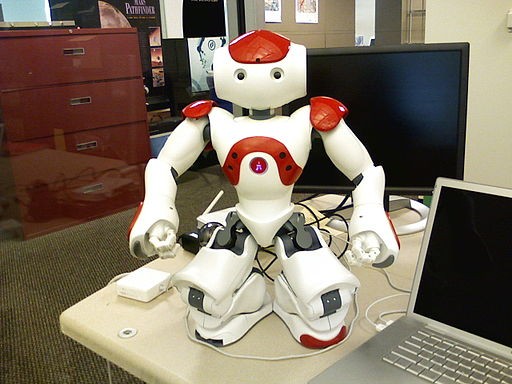Robots Help Children with Autism Improve Their Lives
| Marc Maligalig | | Aug 28, 2014 11:40 PM EDT |
(Photo : Wikimedia Commons)
Humanoid robots could be helpful in aiding children and adults with special needs improve their lives.
A pilot study was conducted in the U.S. about the effects of using human shaped robots to aid children with autism by having these children imitate behaviors that promoted their autonomy or freedom to act independently of outside assistance.
Like Us on Facebook
The results of the study were presented by a team of scientists from the University of Southern California's Veterbi School of Engineering at the 23rd IEEE International Symposium on Robot and Human Interactive Communication on Aug. 27.
The study was led by the Chan Soon-Shiong, Chair in Computer Science, Neuroscience and Pedriatrics, and USC Viterbi Vice Dean for Research Maja Matarić, whose research centers on how robotics can be used to aid those with a number of special needs, from children suffering from autism spectrum disorders to geriatric patients with Alzheimer's.
Their colleagues in the study included postdoctoral researcher Amin Atrash, doctoral student Jillian Greczek and undergraduate computer science student Edward Kaszubski.
"There is a vast health care need that can be aided by intelligent machines capable of helping people of all ages to be less lonely, to do rehabilitative exercises, and to learn social behaviors," said Matarić.
"There's so much that can be done that can complement human care as well as other emerging technologies."
The scientists observed how children with autism disorders reacted to the robots that offered them a new approach to occupational therapy.
They said this approach called graded cueing influenced the children's behavior by offering increasingly particular prompts that helped each child learn or relearn new or lost skills.
A group of 12 high-functioning children with ASD were split into one control and one experimental group by Matarić and her colleagues.
A Nao robot then asked each child to imitate 25 various arm poses in an imitation game.
Nao is an autonomous, programmable humanoid robot from Aldebaran Robotics, a French robotics company. Many versions of the robot have been released since 2008. One of these versions is the Nao Academics Edition developed for universities and laboratories for research and education purposes.
If a child was successful in matching the pose, Nao (pronounced "Now") would nod, flash its eyes green and verbally reaffirm the child.
If the child in the control group made a mistake, the robot repeats the command without any differences.
In contrast, participants in the experimental group were given verbal cues and more detailed demonstrations and instructions of the pose by the robot.
The research suggests that children given the various prompts, called graded cueing feedback, until the goal was attained showed maintained or improved performance.
The children in the control group that were offered no feedback either stayed the same or regressed.
"The idea is to eventually give every child a personalized robot dedicated to providing motivation and praise and nudges toward more integration," Matarić said.
TagsAutism, Robots, Robotics, Electronics, Research, Science
©2015 Chinatopix All rights reserved. Do not reproduce without permission
EDITOR'S PICKS
-

Did the Trump administration just announce plans for a trade war with ‘hostile’ China and Russia?
-

US Senate passes Taiwan travel bill slammed by China
-

As Yan Sihong’s family grieves, here are other Chinese students who went missing abroad. Some have never been found
-

Beijing blasts Western critics who ‘smear China’ with the term sharp power
-

China Envoy Seeks to Defuse Tensions With U.S. as a Trade War Brews
-

Singapore's Deputy PM Provides Bitcoin Vote of Confidence Amid China's Blanket Bans
-

China warns investors over risks in overseas virtual currency trading
-

Chinese government most trustworthy: survey
-

Kashima Antlers On Course For Back-To-Back Titles
MOST POPULAR
LATEST NEWS
Zhou Yongkang: China's Former Security Chief Sentenced to Life in Prison

China's former Chief of the Ministry of Public Security, Zhou Yongkang, has been given a life sentence after he was found guilty of abusing his office, bribery and deliberately ... Full Article
TRENDING STORY

China Pork Prices Expected to Stabilize As The Supplies Recover

Elephone P9000 Smartphone is now on Sale on Amazon India

There's a Big Chance Cliffhangers Won't Still Be Resolved When Grey's Anatomy Season 13 Returns

Supreme Court Ruled on Samsung vs Apple Dispute for Patent Infringement

Microsoft Surface Pro 5 Rumors and Release Date: What is the Latest?










